#Christoph Probst
Text

München, February 22, 1943 / 2024
«Einer muss doch schließlich mal damit anfangen. Was wir sagten und schrieben, denken ja so viele. Nur wagen sie es nicht, es auszusprechen.» – Sophie Scholl, Justizpalastes, München, February 22, 1943
«Die Verurteilte war ruhig und gefasst.»
(Protokoll über die Vollstreckung des Todesurteils des Volksgerichtshofes an Sophie Scholl, München, den 22. Februar 1943)
«freiheit»
(the reverse side (detail) of a document belonging to the Chief Prosecutors, February 21, 1943, with handwriting «freedom» by Sophie Scholl)
Sophie Scholl (May 9, 1921 – February 22, 1943), student
Hans Scholl (September 22, 1918 – February 22, 1943), student
Christoph Probst (November 6, 1919 – February 22, 1943), student
Alexander Schmorell (September 16, 1917 – July 13, 1943), student
Kurt Huber (October 24, 1893 – July 13, 1943), professor
Willi Graf (January 2, 1918 – October 12, 1943), student
and
Hans Konrad Leipelt (July 18, 1921 – January 29, 1945), student
Margaretha Rothe (June 13, 1919 – April 15, 1945), student
Reinhold Meyer (July 18, 1920 – November 12, 1944), student
Friedrich Geussenhainer (April 24, 1912 – April 1945), student
Katharina Leipelt (May 28, 1893 – January 9, 1944), dr. rer. nat.
Elisabeth Lange (July 7, 1900 – January 28, 1944)
Margaretha Mrosek (December 25, 1902 – April 24, 1945)
Kurt Ledien (June 5, 1893 – April 23, 1945), dr. jur.
«Das wird Wellen schlagen»
«Allen!»
(image: Sophie Scholl, ca. early-1940s, in Christine Hikel, Sophies Schwester. Inge Scholl und die Weiße Rose, Oldenbourg Verlag, München, 2013, p. 94)
#weiße rose#sophie scholl#hans scholl#christoph probst#alexander schmorell#kurt huber#willi graf#hans konrad leipelt#margaretha rothe#reinhold meyer#friedrich geussenhainer#katharina leipelt#katharina leipelt baron#elisabeth lange#margaretha mrosek#margaretha mrosek schram#kurt ledien#christine hikel#inge scholl#weiße rose stiftung#oldenbourg verlag#studentenwohnheim geschwister scholl#1890s#1900s#1910s#1920s#1940s
21 notes
·
View notes
Text
From July to November 1942, Hans, Schmorell and Graf were forced to take a break from their studies—and their burgeoning activism—to serve as medics on the Eastern Front. There, they witnessed with their own eyes the misery of Jewish prisoners in the Warsaw Ghetto. “Warsaw would sicken me in the long run,” Hans wrote to his parents in July. “Half-starved children sprawl in the street and whimper for bread. … The mood is universally doom-laden.”
Appalled by the violence and injustice they’d witnessed, the friends returned to Munich determined to step up their resistance efforts by distributing leaflets throughout Germany and Austria. Ultimately, the White Rose circulated at least 7,000 leaflets in 16 major cities, from Munich to Frankfurt to Vienna to Berlin, conveying the impression that the group’s membership was widespread, not just a handful of indefatigable students hand-cranking out pamphlets in Munich.
The leaflets were like nothing the Gestapo had ever seen—not rigid ideological tracts aimed at the working classes, but passionate, erudite manifestos that quoted Friedrich Schiller, Plato and Laozi. “The guilt of Hitler and his accomplices goes beyond all measure,” read the group’s fifth leaflet. “Tear up the cloak of indifference you have wrapped around your hearts. Make your decision before it is too late!”
— Hans and Sophie Scholl Were Once Hitler Youth Leaders. Why Did They Decide to Stand Up to the Nazis?
#jud newborn#hans and sophie scholl were once hitler youth leaders. why did they decide to stand up to the nazis?#history#military history#antisemitism#philosophy#ethics#ww2#holocaust#germany#nazi germany#poland#warsaw#warsaw ghetto#hans scholl#alexander schmorell#willi graf#sophie scholl#christoph probst#white rose#gestapo
15 notes
·
View notes
Text



Hans Scholl, Willi Graf and Christoph Probst. Pictures taken after their arrest in 1943, animated with MyHeritage.
49 notes
·
View notes
Text
THE WHITE ROSE
Eighty years ago today, on Monday, February 22, 1943, three young Christians were led from their cells in Munich’s Stadelheim Prison to an execution chamber. There Hans Scholl (24), his sister Sophie (21) and their friend Christoph Probst (22) were decapitated by guillotine. It is invidious to compare acts of courage, but the moral and physical bravery of these young Christians humbles us…
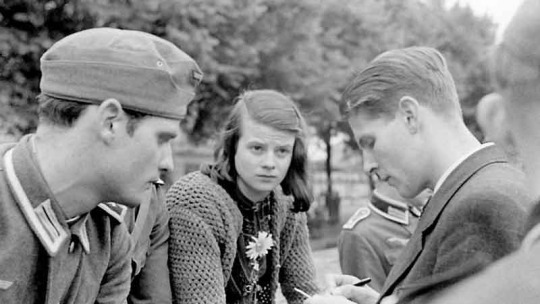
View On WordPress
1 note
·
View note
Link
Today, the Scholls are celebrated for their pivotal role as members of the White Rose, a small, clandestine, anti-Nazi resistance group. They joined the activist network after becoming disillusioned with the Hitler Youth, in which they were both leaders as teenagers. Castigating the German middle class for abandoning its Christian values and leadership roles, the White Rose set out to rouse the masses from their “slumber” and encourage passive resistance against the fascist regime.
The White Rose’s core consisted of six University of Munich students—Hans, Sophie, Probst, Alexander Schmorell, Willi Graf and Traute Lafrenz—and a philosophy professor named Kurt Huber. (All except Lafrenz were eventually executed by guillotine.) A loose network of supporters and sympathetic acquaintances aided the group’s resistance efforts by distributing leaflets and providing money to purchase supplies, among other contributions.
By all accounts, the White Rose activists were among the first within Germany to speak out widely against the mass murder of Jews, in their second leaflet in June 1942. Their legendary distribution of flyers at the University of Munich appears to have been the only fundamentally political public protest against Nazism to be staged by Germans during the 12 years of Adolf Hitler’s rule. The last words of the group’s fourth leaflet became its legacy: “We will not be silent. We are your bad conscience. The White Rose will not leave you in peace!”
Eighty years after their executions, the leaders of the White Rose are counted among the greatest Germans of all time. Numerous schools, streets and plazas are named for them, and monuments honoring their activism appear throughout the country. They have been the subject of plays, documentaries and feature films. One of these movies, Sophie Scholl: The Final Days, was nominated for Best Foreign Language Film at the 2006 Academy Awards.
Yet two mysteries about the White Rose long bedeviled laypeople and scholars alike: What motivated the 1937 transformation of the teenaged Hans and Sophie from fanatical acolytes of Nazism to passionate anti-Nazis? And why did Hans and his friends choose the “White Rose” as the name of their resistance organization?
The answers to these two questions appear to be interwoven. According to previously ignored Gestapo interrogation transcripts, along with my own subsequent research, anti-gay Nazi policies played a pivotal role in the radicalization of the Scholl siblings, helping to turn them into exemplars of civil courage.
#history#military history#lgbt#lgbt history#homophobia#ww2#holocaust#germany#nazi germany#poland#warsaw#warsaw ghetto#hans scholl#sophie scholl#christoph probst#alexander schmorell#willi graf#traute lafrenz#hans blüher#b. traven#josef söhngen#deutsche jungenschaft 1.11.1929#white rose
0 notes
Text
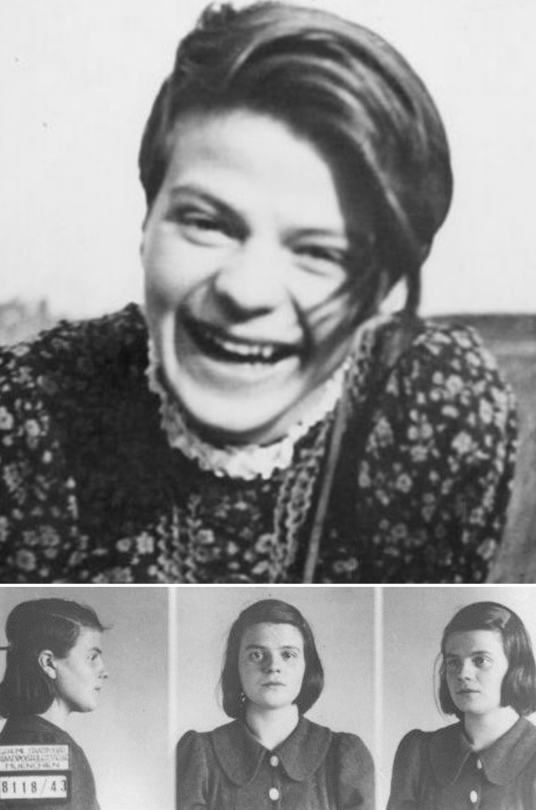
Not every story of heroism takes place on the front lines. Sometimes, the story is about treason......
As a student in Germany during the Second World War, Sophie Scholl (pictured) knew that Hitler's régime was lying to the German people about the conduct of the war on the eastern front.
Her fiancé, Fritz Hartnagel, an officer in the Wehrmacht, wrote her letters outlining the horrible suffering of the German troops fighting there, but also told her about the inhuman atrocities being committed against Russian civilians.
With other like-minded young students, Sophie joined a resistance organization co-founded by her brother, Hans. The organization was called the White Rose (Weiße Rose), and they wrote pamphlets calling for the end of the Nazi régime.
In February of 1943, Sophie and Hans were arrested by the Gestapo for blanketing the campus of Ludwig Maximilian University in Münich with anti-Nazi leaflets. Their arrest led to the arrest of another member of the group, a medical student named Christoph Probst, who was one of the main authors of the White Rose's pamphlets.
With German morale spiraling downward, German cities being leveled by Allied bombers, and tens of thousands of German civilians being killed in air raids, respect for the Nazi leadership was crumbling in areas of the country.
Against this backdrop, the Gestapo decided to make an example of Sophie, Hans, and Christoph.
Four days after Sophie and Hans were arrested, and two days after Christoph's arrest, all three were condemned to death by a German court, and executed by guillotine that same evening.
Christoph was 23, Hans was 24, and Sophie was only 21.
Later that year, one of the White Rose's anti-Nazi pamphlets was smuggled to England. The Allies made millions of copies of it, and dropped them from bombers all over Germany so the message of these heroic students would continue to spread, and would fan the flames of discontent throughout the dying Third Reich.
Historia Obscurum
104 notes
·
View notes
Photo

On this day, 22 February 1943, three German White Rose activists, students Christoph Probst, Hans and Sophie Scholl (pictured), were executed by guillotine for urging the overthrow of the Nazi government: just some of the tens of thousands of Germans who attempted to oppose fascism. As the blade fell, Hans called out “Let freedom live!” Learn more about resistance to Nazism in Germany in our podcast episodes 63-64: https://workingclasshistory.com/podcast/e63-64-mildred-fish-harnack/ https://www.facebook.com/workingclasshistory/photos/a.296224173896073/2215664405285364/?type=3
321 notes
·
View notes
Text
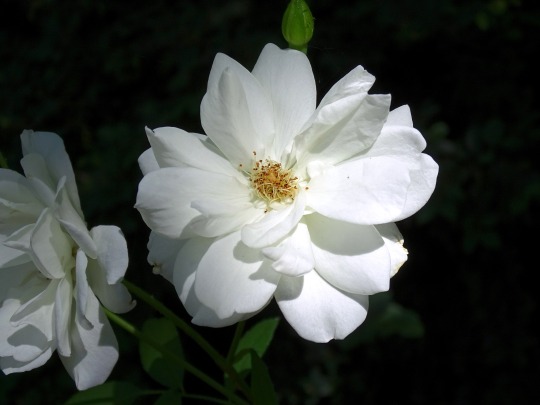


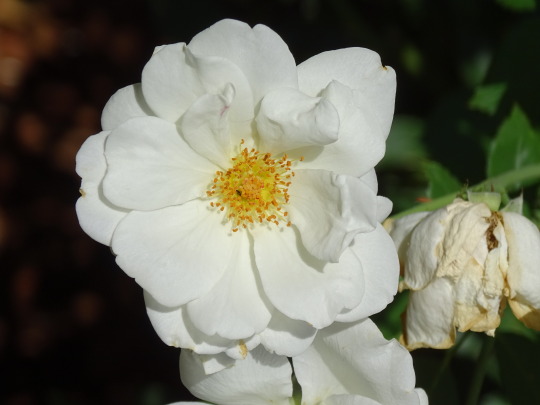
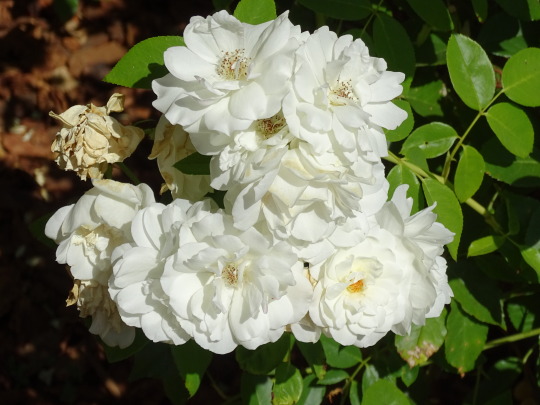
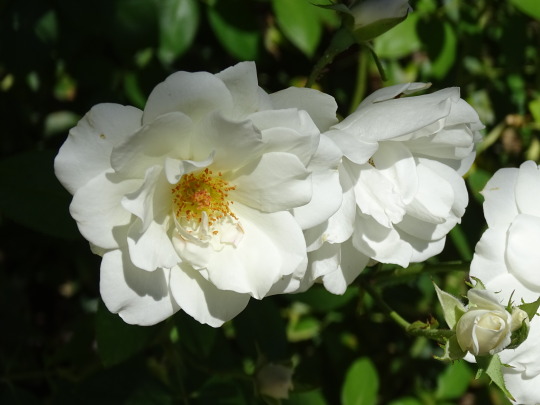
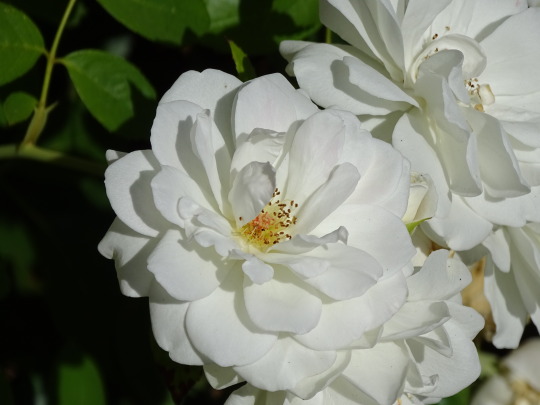
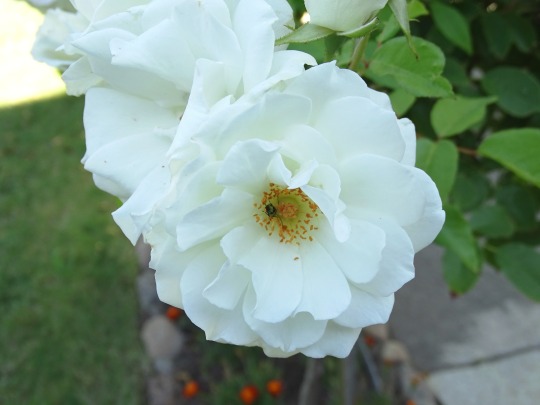

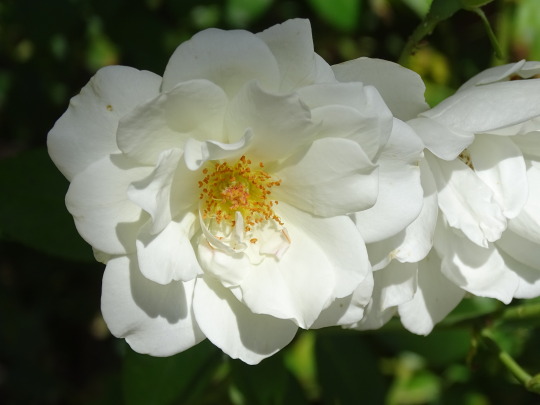
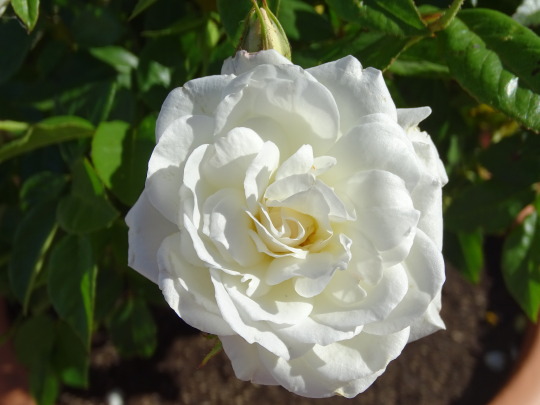




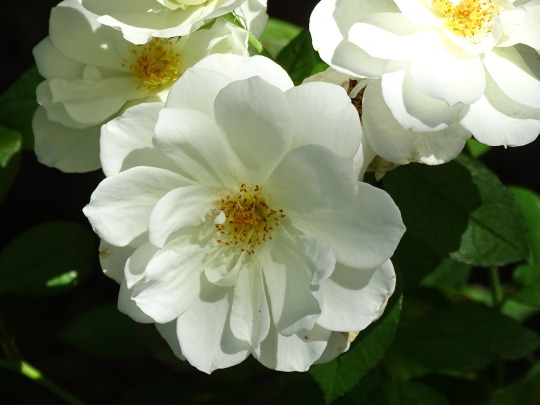
Members of the White Rose resistance, Sophie Scholl, Hans Scholl, and Christoph Probst are executed in Nazi Germany on February 22, 1943.
#Cline Family Cellars#Sonoma Valley#flora#flower#blooming#rose#USA#Beringer Vineyards#Freemark Abbey Winery#St. Helena#Napa Valley#travel#summer 2022#original photography#California#Domaine Carneros#Germany#White Rose resistance#Sophie Scholl#Hans Scholl#executed#22 February 1943#anniversary#Germany history#World War Two#WW II#Widerstand#2023
10 notes
·
View notes
Text
Rest In Peace, Traute Lafrenz, 103 years 🧡

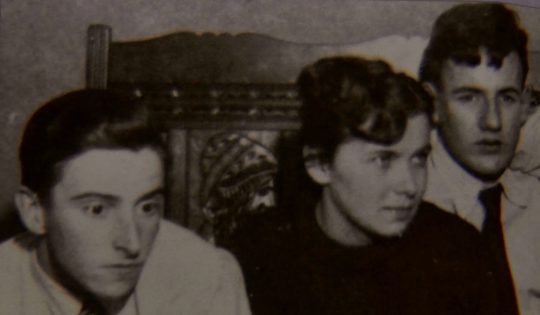
The last member of German WWII resistance group 'White Rose' died on 06. March
Dying at this proud age, it's special... if we look at her fellows- the famous Sophie and Hans Scholl. Traute was member of the White Rose in Hamburg and Munich where the siblings Scholl went to university.
Nowadays it's hard for us to imagine what a risk it was to help such student founded groups; she was one of the most important members.
Other famous members: Christoph Probst-- Alexander Schmorell, the 'russian soul' and martyr -- Willi Graf and of course Sophie and Hans Scholl
Some of these had tried to help Jews, some had connections with them.
All anti NS regime 'organisations' were important in German history... there was also the military resistance -Stauffenberg but also many other brave people-, churches, socialism/communism, minorities which didn't fit to the new standards...
Die Weiße Rose has always been a big example for me- as well as for m a n y others; Exhibitions and connections with people from their history related places... every single information is golden about this.
I just wish her a beautiful life in heaven and that she meets her old fellows. They were already killed in the times of '42 to '43, when these young persons were in their 20's. Let's pray for everyone who has lost their lives back then, however.
And I'm so happy for Traute from all my heart. I can't express it in words.
//
#long live german resistance of the WWII#against nazism#forever#Weiße Rose#1940s#looking back at her life- I get tears of joy (?)#I was just writing articles for our school's news#and a presentation#so I thought- ah how is she doing?#:(#always an example means since 2019 or so#World War Two#sorry if my grammar is bad
8 notes
·
View notes
Text
Sophie Scholl, Hans Scholl, and Christoph Probst were executed by guillotine on February 22, 1943 for distributing leaflets and using graffiti to decry Nazi crimes and calling for resistance to the Nazi state and Hitler.
6 notes
·
View notes
Text
Mindhunter (2017-2019)
Created by Joe Penhall
Cinematography by Christopher Probst and Erik Messerschmidt
Starring Jonathan Groff, Holt McCallany, Hannah Gross, Stacey Roca and Michael Cerveris
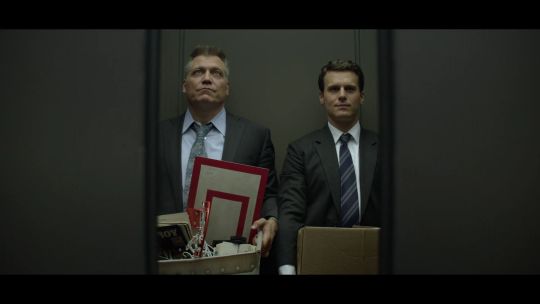
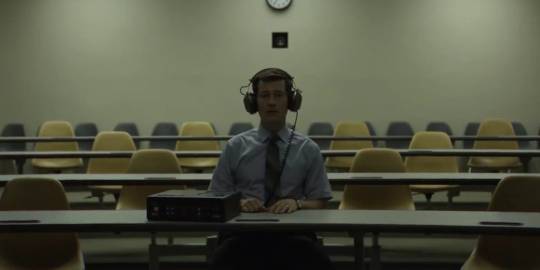
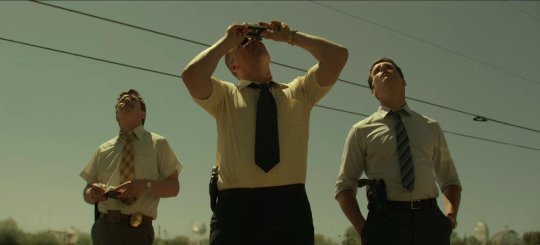

"How do we get ahead of crazy if we don’t know how crazy thinks?"
2 notes
·
View notes
Photo
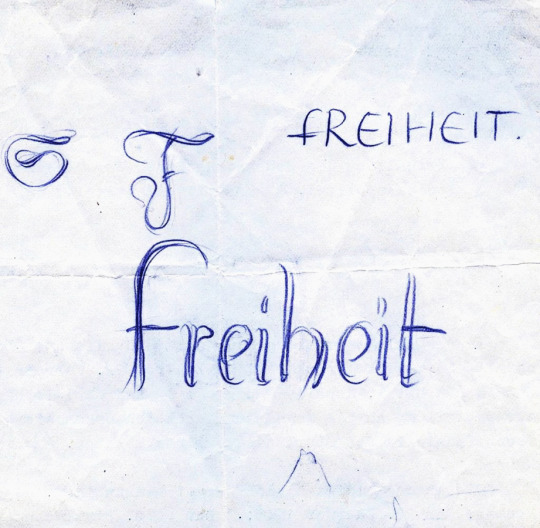
München, February 22, 1943 / 2023
«freiheit»
(the reverse side (detail) of a document belonging to the Chief Prosecutors, February 21, 1943, with handwriting «freedom» by Sophie Scholl)
«Die Verurteilte war ruhig und gefasst.»
(Protokoll über die Vollstreckung des Todesurteils des Volksgerichtshofes an Sophie Scholl, München, den 22. Februar 1943)
Sophie Scholl (May 9, 1921 – February 22, 1943), student
Hans Scholl (September 22, 1918 – February 22, 1943), student
Christoph Probst (November 6, 1919 – February 22, 1943), student
Alexander Schmorell (September 16, 1917 – July 13, 1943), student
Kurt Huber (October 24, 1893 – July 13, 1943), professor
Willi Graf (January 2, 1918 – October 12, 1943), student
and
Hans Konrad Leipelt (July 18, 1921 – January 29, 1945), student
Margaretha Rothe (June 13, 1919 – April 15, 1945), student
Reinhold Meyer (July 18, 1920 – November 12, 1944), student
Friedrich Geussenhainer (April 24, 1912 – April 1945), student
Katharina Leipelt (May 28, 1893 – January 9, 1944), dr. rer. nat.
Elisabeth Lange (July 7, 1900 – January 28, 1944)
Margaretha Mrosek (December 25, 1902 – April 24, 1945)
Kurt Ledien (June 5, 1893 – April 23, 1945), dr. jur.
«Das wird Wellen schlagen»
«Allen!»
#weiße rose#sophie scholl#hans scholl#christoph probst#alexander schmorell#kurt huber#willi graf#hans konrad leipelt#margaretha rothe#reinhold meyer#friedrich geussenhainer#katharina leipelt#katharina leipelt baron#elisabeth lange#margaretha mrosek#margaretha mrosek schram#kurt ledien#weiße rose stiftung#studentenwohnheim geschwister scholl#1890s#1900s#1910s#1920s#1940s
26 notes
·
View notes
Text
Events 2.21 (before 1950)
1076 – Having received a letter during the Lenten synod of 14–20 February demanding that he abdicate, Pope Gregory VII excommunicates Henry IV, Holy Roman Emperor.
1316 – The Battle of Picotin, between Ferdinand of Majorca and the forces of Matilda of Hainaut, ends in victory for Ferdinand.
1371 – Robert II becomes King of Scotland, beginning the Stuart dynasty.
1495 – King Charles VIII of France enters Naples to claim the city's throne.
1632 – Ferdinando II de' Medici, Grand Duke of Tuscany, the dedicatee, receives the first printed copy of Galileo's Dialogue Concerning the Two Chief World Systems.
1651 – St. Peter's Flood: A storm surge floods the Frisian coast, drowning 15,000 people.
1744 – War of the Austrian Succession: The Battle of Toulon causes several Royal Navy captains to be court-martialed, and the Articles of War to be amended.
1770 – British customs officer Ebenezer Richardson fires blindly into a crowd during a protest in North End, Boston, fatally wounding 11-year-old Christopher Seider; the first American fatality of the American Revolution
1797 – The last Invasion of Britain begins near Fishguard, Wales.
1819 – By the Adams–Onís Treaty, Spain sells Florida to the United States for five million U.S. dollars.
1847 – Mexican–American War: The Battle of Buena Vista: Five thousand American troops defeat 15,000 Mexican troops.
1848 – The French Revolution of 1848, which would lead to the establishment of the French Second Republic, begins.
1856 – The United States Republican Party opens its first national convention in Pittsburgh.
1862 – American Civil War: Jefferson Davis is officially inaugurated for a six-year term as the President of the Confederate States of America in Richmond, Virginia. He was previously inaugurated as a provisional president on February 18, 1861.
1872 – The Prohibition Party holds its first national convention in Columbus, Ohio, nominating James Black as its presidential nominee.
1879 – In Utica, New York, Frank Woolworth opens the first of many of five-and-dime Woolworth stores.
1881 – Cleopatra's Needle, a 3,500-year-old Ancient Egyptian obelisk is erected in Central Park, New York.
1889 – President Grover Cleveland signs a bill admitting North Dakota, South Dakota, Montana and Washington as U.S. states.
1899 – Filipino forces led by General Antonio Luna launch counterattacks for the first time against the American forces during the Philippine–American War. The Filipinos fail to regain Manila from the Americans.
1904 – The United Kingdom sells a meteorological station on the South Orkney Islands to Argentina; the islands are subsequently claimed by the United Kingdom in 1908.
1909 – The sixteen battleships of the Great White Fleet, led by USS Connecticut, return to the United States after a voyage around the world.
1921 – After Russian forces under Baron Roman von Ungern-Sternberg drive the Chinese out, the Bogd Khan is reinstalled as the emperor of Mongolia.
1942 – World War II: President Franklin D. Roosevelt orders General Douglas MacArthur out of the Philippines as the Japanese victory becomes inevitable.
1943 – World War II: Members of the White Rose resistance, Sophie Scholl, Hans Scholl, and Christoph Probst are executed in Nazi Germany.
1944 – World War II: American aircraft mistakenly bomb the Dutch towns of Nijmegen, Arnhem, Enschede and Deventer, resulting in 800 dead in Nijmegen alone.[
1944 – World War II: The Soviet Red Army recaptures Krivoi Rog.
1946 – The "Long Telegram", proposing how the United States should deal with the Soviet Union, arrives from the US embassy in Moscow.
0 notes
Text
I was wondering if any of you would be interested in joining a Discord dedicated to the White Rose? The setting would be more intimate and friendly. It would allow us to learn, share and question even more. I have thousands of things to say that I don't want to publish, because I consider the information incomplete or unreliable. To have a place where I can share all this would be fantastic. Let me know if you are interested.
#the white rose#die weiße Rose#sophie scholl#Hans scholl#willi graf#alexander schmorell#Kurt Huber#Christoph probst
6 notes
·
View notes
Text
White Rose
Hans Scholl, Sophie Scholl and Christoph Probst were all part of the non-violent student resistance group called “white rose” during Nazi occupied Germany in 1942.
All three were convicted of treason and executed by the Gestapo.
Sophie Scholl’s last words before her execution:
“How can we expect righteousness to prevail when there is hardly anyone willing to give himself up individually to a…
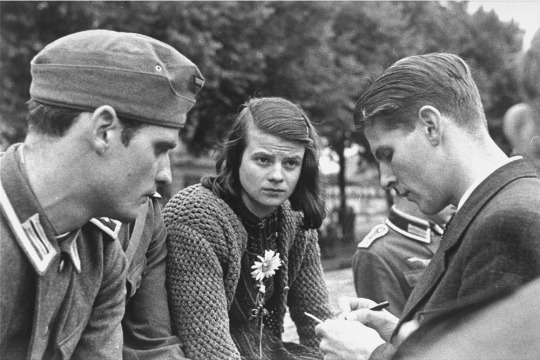
View On WordPress
0 notes
Text

Anti-Nazi Activist – Sophie Scholl
She was executed for treason.
Sophie Scholl was a German college student and political activist who bravely fought the Nazi propaganda machine at the cost of her young life.
Sophie was born in 1921 to a Lutheran family. Her father Robert was the mayor of Forchtenerg am Kocher. As the Nazi party rose to power in the 1930’s, Robert Scholl became a fierce critic of the oppressive regime.
Exceptionally bright and curious, Sophie was an excellent student and a talented artist. High school was difficult for her, however, because the curriculum was increasingly poisoned with Nazi indoctrination.
After high school and a stint as a kindergarten teacher, Sophie attended the University of Munich with her brother Hans. In Munich, the siblings reveled in the sophistication of big-city life. They met artists and intellectuals, but nobody knew what to do about the darkness overtaking their country.
A devoted Christian, Sophie was an admirer of Cardinal Newman, who preached a “theology of conscience” which advocated resisting authority when necessary in service of a greater good.
Determined to do what she could to save her country from the evils of Nazism, Sophie formed a resistance group with Hans and a few other friends from university. They named their group the White Rose.
Sophie knew that Hitler’s most powerful weapon was the pro-Nazi propaganda that saturated the country. She decided to combat the newspapers’ hateful lies with truthful publications delivered directly to ordinary Germans.
The White Rose wrote and printed pamphlets denouncing the Nazi regime and warning Germans that Hitler was destroying their country. Despite the extreme danger, they handed out thousands of pamphlets in Munich, and later in other parts of Germany.
The pamphlets contained sharp warnings such as: “Hitler is leading the German people into the abyss. Are we to be forever a nation which is hated and rejected by all mankind?”
On February 18, 1943, Sophie and Hans were distributing their sixth leaflet when they were arrested by the Gestapo. Sophie was interrogated so cruelly that her leg was broken.
Brought before a judge, Sophie was not allowed a lawyer. Her sole defense consisted of the following statement:
“Somebody after all, had to make a start. What we wrote and said is also believed by many others. They just don’t dare express themselves as we did.”
Sophie, Hans and fellow White Rose activist Christoph Probst were found guilty of high treason on February 22, 1943. They were sentenced to death and executed that same day.
Witnesses later described Sophie’s remarkable serenity and courage walking to the guillotine. Her last words were: “Such a fine, sunny day, and I have to go, but what does my death matter, if through us, thousands of people are awakened and stirred to action?”
Hans’ last words were “Long live freedom.”
A copy of the White Rose’s sixth and final leaflet was smuggled out of Germany and given to Allied forces. In mid-1943, the Allies dropped millions of copies over Germany. They renamed it “Manifesto of the Students of Munich.”
Today, over 200 schools in Germany are named for the Scholls.
For standing bravely for truth and freedom against Hitler’s government, we honor Sophie Scholl and the other members of the White Rose as this week’s Thursday Heroes at Accidental Talmudist.
Accidental Talmudist
28 notes
·
View notes